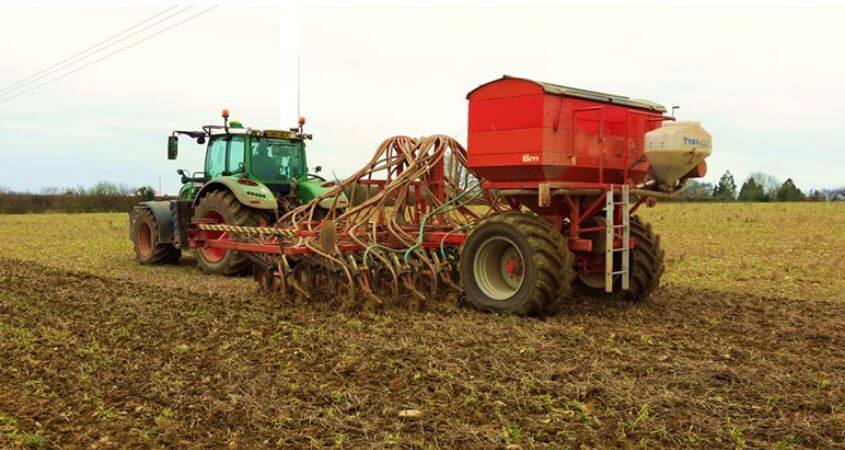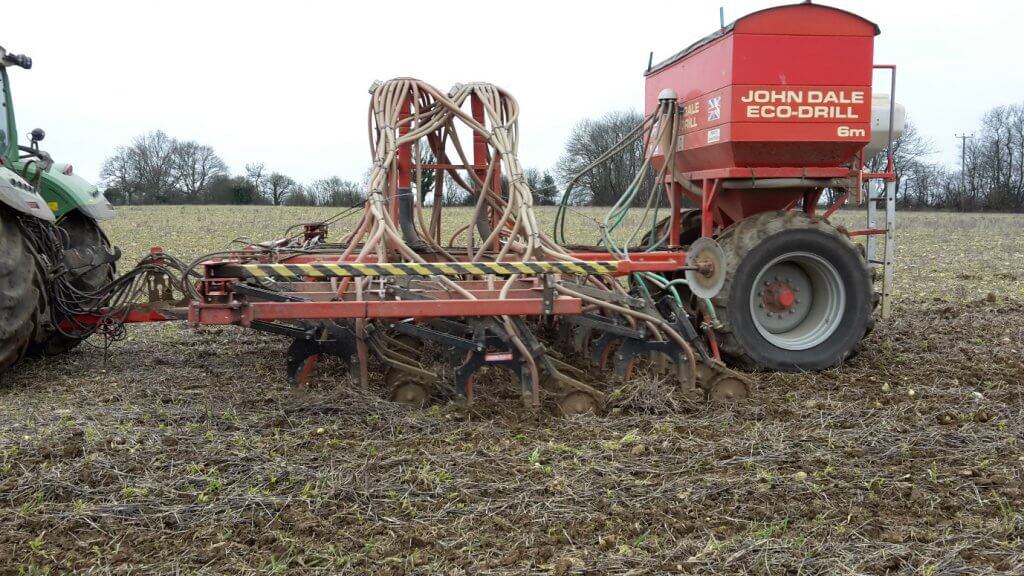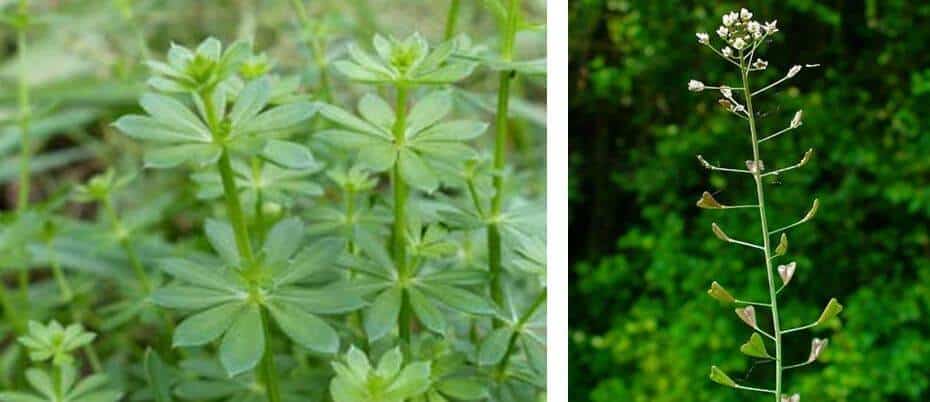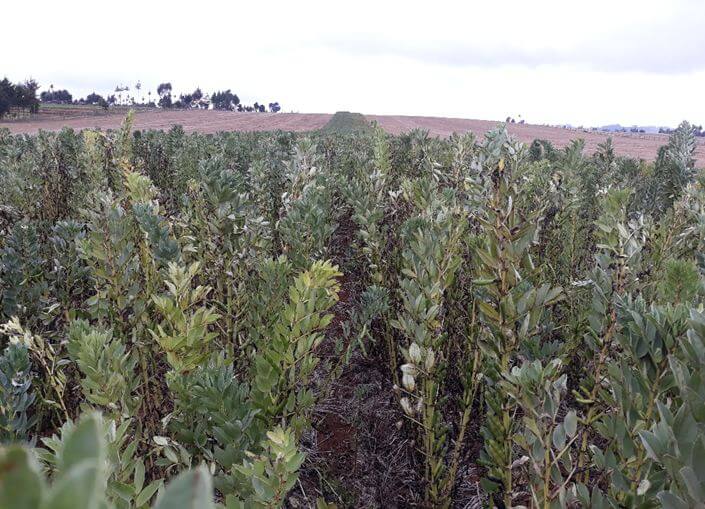
In this issue of #ThinkAgronomy we make comments on 3 crucial topics trending among broad acre farmers right now
There seems to be a lot of conversation recently about seeders, so over the next few weeks we will be looking at a different manufacturer each week. First up is an interesting tine seeder from the UK, the Dale Eco Drill.
Dale manufacture some of the most adaptable tine seeders I have come across, with a very wide range of row configurations. Each tine can be quickly changed to a double seed boot so that the rows are effectively every 5 inches or 10 inches apart, and alternative tines can be removed to give a 20 inch row for Canola or moisture seeking for example.

Good trash clearance is an impressive feature of the machine with a high clearance under the beam, and three rows of tines allowing plenty of space for heavy crop residue to flow through the seeder without causing blockages.
As tine seeders go, the narrow legs set on a 10 inch row configuration are very low disturbance. Another great feature with the planter is that it is built to handle seed rates well in excess of 200kg/ha for planting large seeded peas and beans.
The unit separates seed and fertiliser, and front cutting discs can be fitted to help get through dense residues, however my experience of cutting discs on tine planters is that they are never quite as good as proper disc opener.
Light weight design of the Dale Eco Drill means the horsepower requirement is low, but it also means that this is not the strongest of machines compared to say a Contour, Seedhawk or Rowgrow.
Presswheels also need careful consideration as they do not give the best firming action that a John Deere Conservapak would achieve – particularly important for small seeds such as Canola.
Overall, the Dale Eco Drill is a good machine that is both highly adaptable and accurate if looked after well.
Be very careful when applying clomazone EC formulations to crops where there are sensitive crops nearby.
The Emulsifiable Concentrate formulation is extremely volatile, and can pick up and move to neighbouring fields, sometimes over distances greater than 100m.

Note that this is NOT the same as drift – where the herbicide does not actually reach the target in the first place but gets carried by the wind.
It is an excellent product and a different mode of action to many of the herbicides we use, plus an invaluable tool for controlling Cleavers (left photo) and Shepherd’s Purse (right hand photo). Just be mindful that even if conditions are good at application, damage to neighbouring crops – although transient – is very vivid.
In some countries the EC formulation it is not permitted and only Micro encapsules versions are approved for this reason.
Legumes are a very popular and important rotation crop, but looking at Deep Available Nitrogen cores from across our agronomy clients, the residual nitrogen left in the soil after peas in particular is often far less than we think. We will explore this in some depth at a later date including our recent rhizobium inoculant trials, but it prompted me to ask the question, “what can other pulses provide us that peas don’t?”

This week let’s take a look at Faba Beans. The first caveat is the difference in price; whilst peas fluctuate between 50-70Ksh per kilo, Faba Beans are at present a livestock feed (until a human consumption or export market develops) that at best will achieve 40ksh.
Direct inputs (seed, sprays and fertiliser) however are typically far lower with Faba Beans, at 25,000 ksh/ha compared to peas at 65,000 ksh/ha. On top of this, yields of 4 t/ha are frequently achieved.
| Faba Beans | Peas | |
| Price (ksh per kilo) | 35 | 65 |
| Yield | 4.0 t/ha or 17 bags/ac | 2.75 t/ha or 12 bags/ac |
| Output (ksh per hectare) | 140,000 | 178,750 |
| Direct inputs (ksh per hectare) | 25,000 | 65,000 |
| Gross Margin (ksh per hectare) | 115,000 | 113,750 |
Faba beans are very much a developing crop here, but there are suitable varieties and importantly there is scope to grow them to a price point and still achieve reliable yields.
Other benefits include more reliable nodulation in my experience, easier combining particularly in wet conditions, far fewer sprayer passes and good herbicide options (unlike Lupins).
They are also a fantastic nematode break – which Chickpeas for example do not provide – and they can be planted deep and early, spreading the planting workload.
Farming for the future requires a change of approach. Monoculture, soil degradation and climate change and soil degradation are threats to the future of how we feed the planet. Agventure Ltd set up the Center of Excellence for Crop Rotation to help farmers diversify cropping systems and introduce techniques which have a long-term outlook to improve soil health. The Center of Excellence for Crop Rotation works extensively with Crop Nutrition Laboratory Services Ltd (CropNuts).
Till next time,
Happy farming,
David,
David Jones is the Broad Acre Specialist at Crop Nutrition Laboratory Services Ltd. (CROPNUTS). David has a keen interest in soils and no till farming systems where he has undertaken work looking into weed levels and changes in soil structure, and has extensive experience in field trials and in the development of precision farming techniques. In his spare time he enjoys playing rugby.
Order our services and get to know how to improve your soil for better yeilds.